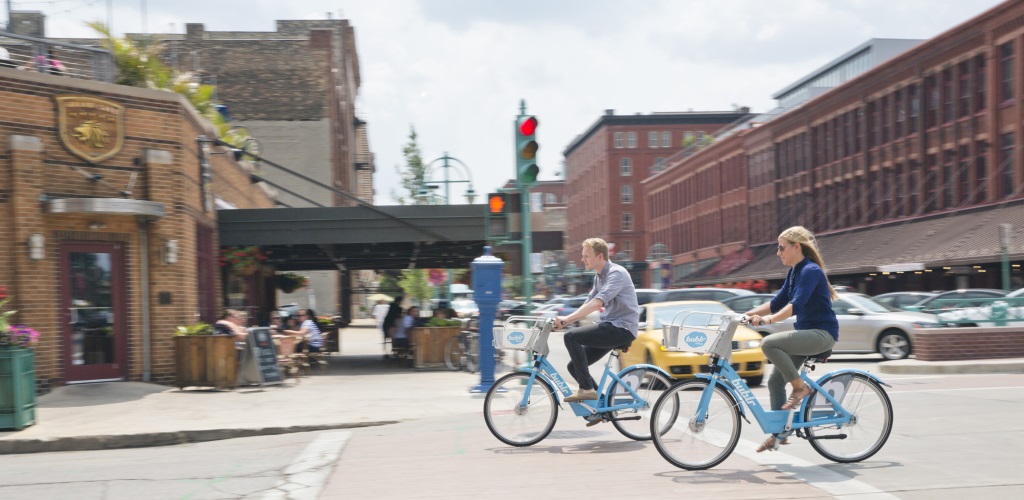Why Milwaukee’s Great for Startups
Offering reduced expenses, access to talent, diversity and urban amenities.
I relocated to Milwaukee in 2010, after graduating with my software engineering degree and accepting a position at a local software company. When I initially made the move, I viewed this as a temporary but necessary stop, one that would help start my professional career. I expected to find a dirty, beaten down, Rustbelt city but what I found instead was a vibrant community built on innovation and technology with affordable, nationally ranked amenities. After working in Milwaukee for nearly a decade and more recently, building a tech startup here in Milwaukee, I decided to publish some thoughts about why others should follow suit and found their startup here.
Reduced Burn Rate
Congratulations, you’ve just raised ten million dollars from a venture capital firm to build your dream company! It will be tempting to pop champagne bottles when that check hits your bank account, but this is not the time for complacency. Your bank account has now become a countdown clock. If you’re able build a sustainable business before the countdown hits zero then you win. If not, then you and everyone you hired will be looking for a new job.
To illustrate this point you don’t have to look very far. Shyp, once one of the hottest tech startups in Silicon Valley, raised over $50 million from some of the most well-known investors in the valley and was once valued over $250 million, yet earlier this year they closed their doors. In a heartfelt post, former CEO Kevin Gibbon explained:
our earlier mistakes had left us with too little runway and insufficient resources to continue pursuing the new direction.
According to Gibbon, the company had eventually pivoted to a very promising business model but simply ran out of time and money to see it through.
When analyzing your projected burn rate, the rate at which you’re spending money, the good news for aspiring founders is that you can build a great company with just a handful of smart people and the only equipment you’ll need are laptops and cell phones — you don’t even need office space! What many inexperienced founders overlook is that this makes labor your largest expense. As your largest expense, you should always be keeping a very close eye on labor costs because this could make or break your company.
According to Glassdoor, in San Francisco, CA, the average annual salary for a software engineer is a whopping $124,555 compared to Milwaukee, WI where the average annual salary for a software engineer is a much more reasonable $82,599. For this reason alone, I would be very hesitant to found a company in an area where my largest expense would be increased so drastically. Looking at these numbers, I think it’s fair to speculate that if Shyp had been founded in Milwaukee the company might still be in business today.
Access to Talent
The Greater Milwaukee Area has an embarrassment of riches when it comes to education. Within the city limits alone we have three world-renowned universities in the Milwaukee School of Engineering, the UW–Milwaukee, and Marquette University. All told, 24 colleges, universities and tech schools call the Milwaukee region home with a combined enrollment of well over 100,000 students and an even larger alumni population. This dense cluster of educational institutes ranks among the largest in the country. In an era where there is an extreme labor shortage, having access to a large population of college graduates is key to fueling the growth of any company.
In addition to an abundance of well-educated young workers that are entering the workforce every year, the Milwaukee area already employs over 76,000 technology workers. This means that there is a large labor pool of highly skilled, experienced technology workers that just might be looking for a new challenge your startup can provide.
Diversity
There is no denying that technology companies have been an amazing catalyst for the economy and have generated unprecedented amounts of wealth over the last few decades. Despite the monumental contributions of these companies, many technology companies have recently been scrutinized for lack of diversity in their respective workforces, so much so that Google recently began publishing annual diversity metrics. In addition to social pressures, many studies that have been published have linked higher performance and profits to teams that are more diverse.
Although I fully support efforts to create more diverse and inclusive workforces, this post is not intended to get into the weeds of why I think building more diverse teams is good business. For anyone wanting to learn more on the subject, I’d recommend reading Brotopia: Breaking Up the Boys’ Club of Silicon Valley by Emily Chang, which opened my eyes to some of my blind spots as a white male.
Milwaukee has long been known as a diverse city of immigrants which has been a source of strength for the city. This can be evidenced by the multiple ethnic festivals that take place over the summer. To put some numbers behind this, according to the last census in 2010, the majority of Milwaukeeans are minorities: 40 percent of residents of the city of Milwaukee are African American, 17 percent are Hispanic, and 4 percent are Asian. Compare this to the city of San Francisco, which boasts an African American population of just 6 percent or the latest Google diversity numbers that show the company consists of just 2.5 percent African Americans and only 30 percent women, the picture starts to become clearer. As the technology industry continues to explode in Milwaukee, our diverse population can be turned into a competitive advantage that will enable founders to avoid the mistakes of Silicon Valley and create more diverse, inclusive teams that will lead to better performing, more profitable companies.
Affordable Urban Lifestyle
Milwaukee is an amazing place to work and live. In larger cities like NYC, San Francisco, or Chicago, the amenities are great but the crowds are massive and you’ll be forced to allocate a large percentage of your income to necessities like housing and food, leaving little remaining for anything else. As evidenced by the 2017 cost of living index, living in Milwaukee yields significantly higher purchasing power. Urban cities such as NYC, Chicago, Boston, Seattle, Pittsburgh, Minneapolis, Denver, Portland, and Los Angeles all have a significantly higher cost of living. Milwaukee was ranked the 62nd most expensive city to live in despite being the 31st largest city in the U.S.
To help visualize this, all you have to do is look at the Milwaukee skyline. In the last two years, three new high rises with sleek glass exteriors have been added to the Milwaukee skyline. Two additional glass skyscrapers are currently being built and the new entertainment arena, anchored by the Milwaukee Bucks, opens in September. This doesn’t even account for the numerous condo buildings and office buildings that have sprung up over the last few years that are too many to count. What was once a vast expanse of gravel lots located along the river when I first moved to Milwaukee in 2010, is now occupied by numerous clusters of high-end condo and apartment buildings as far as the eye can see.
To illustrate the full scope of the density, amenities, and transit options available in Milwaukee, here is an example itinerary for a summer Friday in Milwaukee:
- Wake up to the reflection of the sunrise over Lake Michigan, the fourth largest fresh water lake in the world.
- Take a Bublr bike to work, utilizing the Oak Leaf Trail, an old railroad track which was converted to a bike trail that conveniently zig zags through the city, offering serene green surroundings with the added bonus of avoiding automobile traffic. Stop to check on your garden plot just off the trail at the Urban Ecology Center on the way.
- After starting your day, take an electric-powered Bird scooter to your mid-morning meeting, a mile down the road.
- After leaving the office early, grab a quick bite to eat from a local vendor at the Milwaukee Public Market.
- Hop on the bus to Miller Park for an afternoon Brewer’s baseball game with friends.
- Take an Uber from the game back to your apartment, passing numerous construction projects, including the new entertainment district, on your way.
- Go for a jog along the lakefront with the MKE running meetup group, passing countless volleyball games at Bradford Beach, the boat-filled marina, Veterans Park, the War Memorial, the Milwaukee Art Museum, and Discovery World as you steadily wind your way down the Hank Aaron State Trail.
- Meetup with your friends at Summerfest, the world’s largest music festival for an evening filled with every genre of music you can imagine and every kind of fried food known to man.
- After the last encore, beat the crowds by taking a water taxi home.
Closing Thoughts
Are you considering founding a tech startup? If so, Milwaukee should be on your list of potential cities for an office location due to its modest cost of labor, loads of available talent, strong diversity, fantastic urban amenities, and an affordable cost of living that will lead to a very high quality of living for you and your employees.
Roman Reynebeau is a technology enthusiast and entrepreneur based in Milwaukee, WI. He is currently an executive at MacGregor Partners.
Op-Ed
-
Proposed Earlier School Start Times Are Harmful
 Jan 29th, 2025 by Maggie Kerr
Jan 29th, 2025 by Maggie Kerr
-
Sean Duffy Is Odd Pick to Run Department of Transportation
 Jan 20th, 2025 by Frank Zufall
Jan 20th, 2025 by Frank Zufall
-
Brad Schimel Defends Jan. 6 Rioters
 Jan 6th, 2025 by Ruth Conniff
Jan 6th, 2025 by Ruth Conniff























This is a minor cavil with this op-ed, but didn’t the City make motorized Bird scooters and their ilk illegal a week or two ago? Or did Council members reverse themselves outside the gaze of the local media? If they did not reverse themselves, isn’t Mr. Reynebeau encouraging locals to break the law? I am neither pro- nor anti-Bird scooters, but I did wonder about this when I saw it toward the close of th4 article.